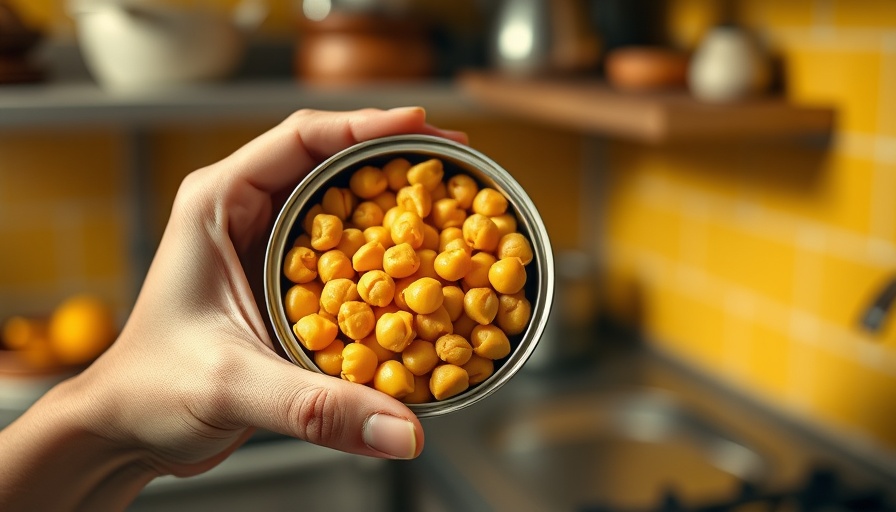
Understanding the Nutritional Value of Canned Chickpeas
Canned chickpeas, also known as garbanzo beans, are a staple in many kitchens, offering an easy and nutritious way to boost meals with protein and fiber. A single cup of canned chickpeas packs approximately 211 calories, 12 grams of protein, and a remarkable 11 grams of fiber. The fiber content is particularly noteworthy as it supports healthy digestion, regulates blood sugar levels, and keeps you feeling full, making it an excellent option for those managing their weight.
Benefits vs. Risks: Unpacking the Downsides of Canned Chickpeas
Though canned chickpeas are often celebrated for their convenience and nutritional benefits, it’s essential to consider potential downsides. One primary concern is the sodium content, which can be as high as 1250 milligrams per serving in some brands. This high sodium level can contribute to increased blood pressure and encourage heart-related issues if consumed excessively. Fortunately, rinsing chickpeas prior to consumption can significantly lower their sodium content, helping those with dietary restrictions.
Botulism Risk: A Rare but Serious Concern
Another risk associated with canned chickpeas is the potential for botulism, a rare but serious illness linked to improperly canned foods. While most store-bought canned chickpeas are safe, signs of damage, such as rust or bulging cans, should be closely monitored. Home-canned chickpeas pose a greater risk; hence, it's crucial to follow safe pressure canning methods to prevent bacteria growth.
Comparative Nutritional Insights
While canned chickpeas are convenient, some may wonder how they stack up against dried chickpeas. Nutritionally, both forms are comparable, if not entirely similar, as the canning process retains most of the bean’s valuable nutrients. However, it’s worth noting that both canned and dried chickpeas can contribute significantly to a balanced diet when consumed in moderation.
Practical Tips to Maximize the Benefits
If you're looking to incorporate more canned chickpeas into your meals but are concerned about sodium intake, consider the following tips: 1) look for low-sodium varieties at your local grocery store, and 2) drain and rinse canned chickpeas to significantly reduce their salt content. Beyond their health benefits, chickpeas are incredibly versatile, lending themselves well to various dishes, from salads to stews, which makes them an appealing addition to any meal.
Conclusion: Embrace Canned Chickpeas Wisely
In summary, canned chickpeas are a convenient, nutritious choice that can be included in a healthy diet. However, staying aware of their sodium content, potential risks, and ways to mitigate these factors is vital. Whether adding them to your soups, salads, or dips, chickpeas can provide numerous health benefits when consumed mindfully.
For those looking to explore more about healthy eating choices and local options for nutritious food, consider consulting with a registered dietitian or joining community health workshops. Embracing healthy living begins with informed choices!
 Add Row
Add Row  Add
Add 




Write A Comment